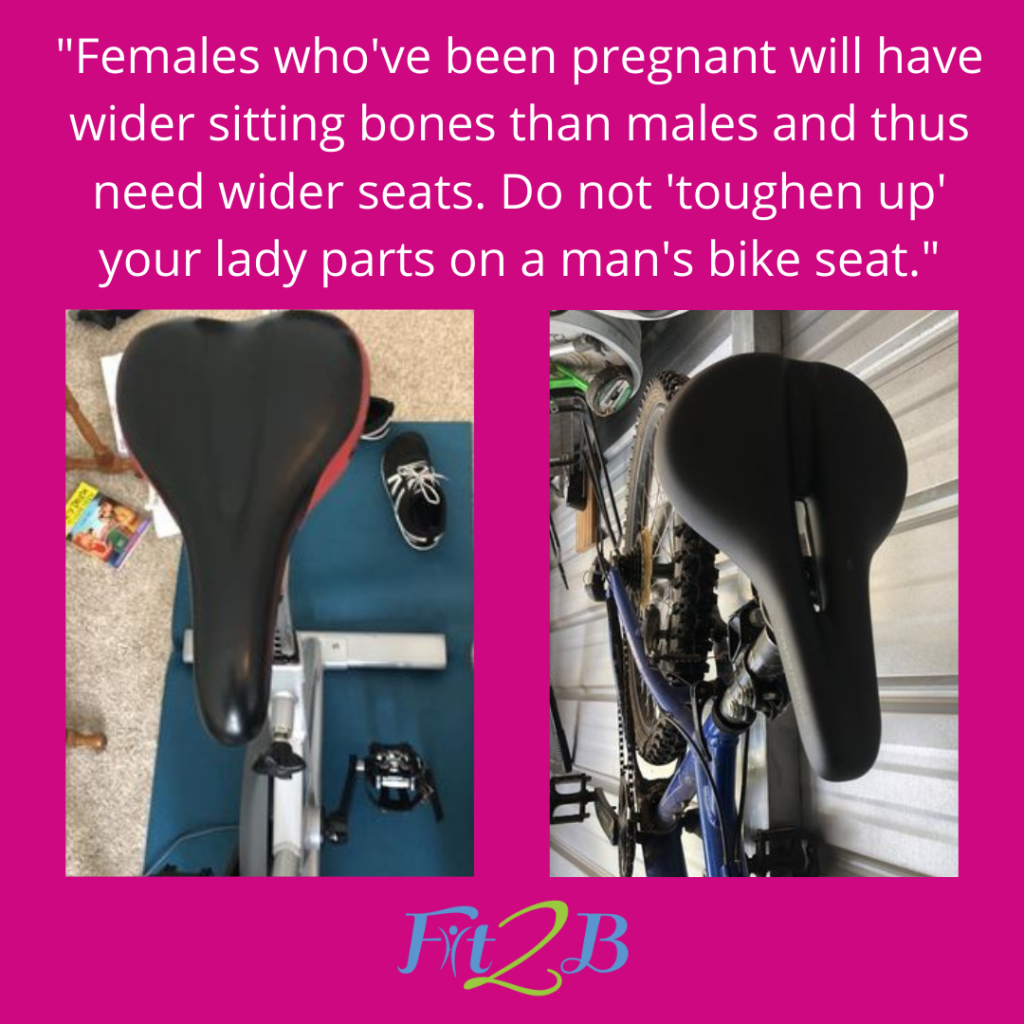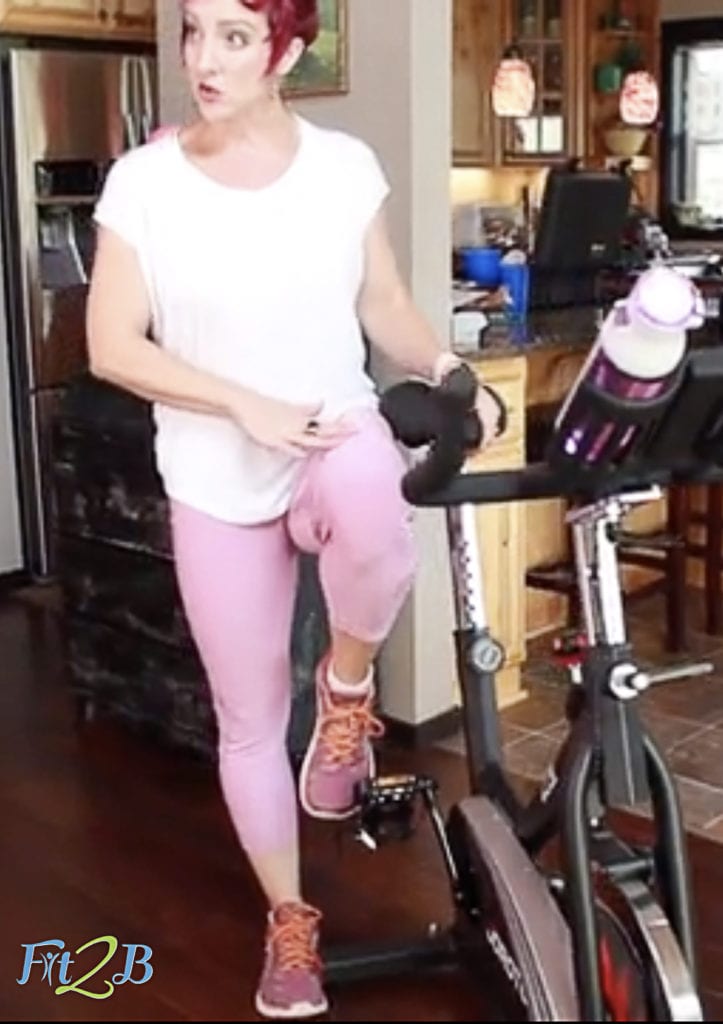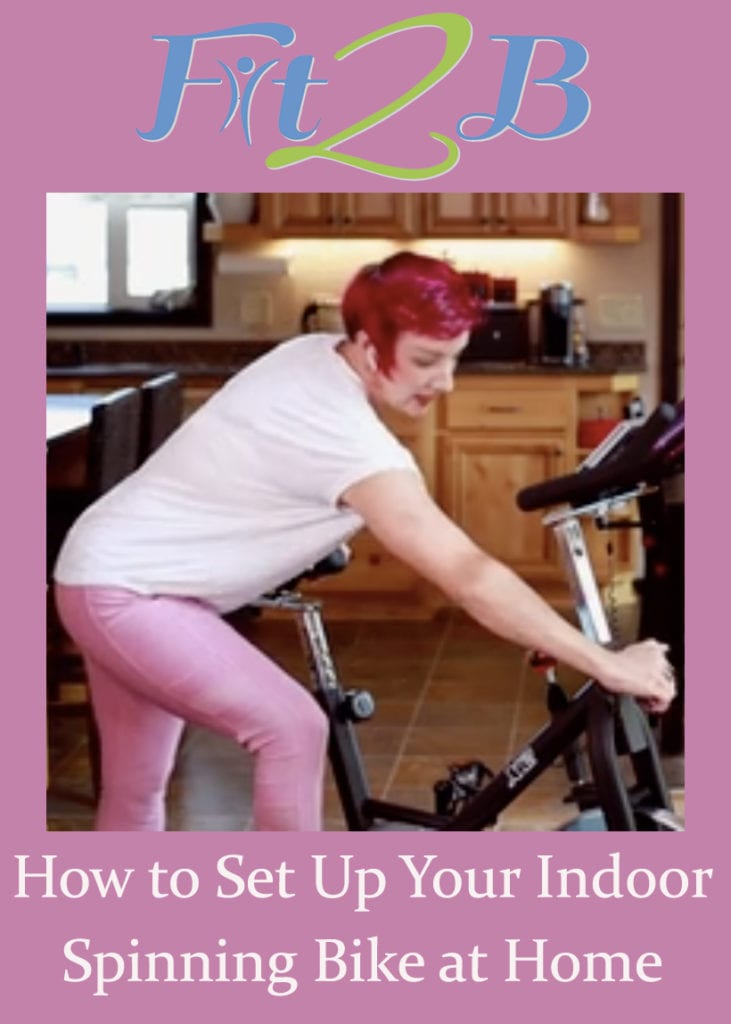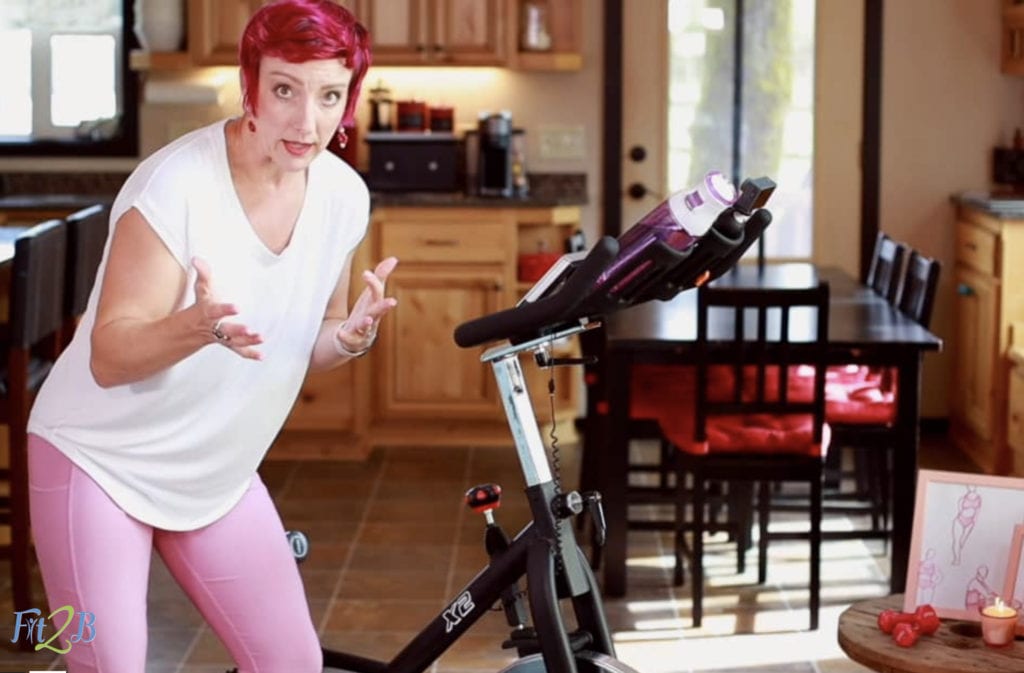Blog
How To Set Up Your Indoor Spinning Bike at Home
If you don’t want to waddle around, looking like you just got off a horse after you finish an indoor cycling workout at home, and you want to prevent injury, avoid chafing, protect your knees, then correctly setting up your home exercise bike is important! This short video will help you set up just about any upright bicycle properly. It will minimize knee problems and help you understand ways to protect your pelvic floor and any Diastasis Recti you may be dealing with, plus it will clarify seat and handlebar positioning. It goes along with our “Pink Pedaling” exercise video in “The Pink Workouts” which are part of the Fit2B Color Series.
Color series of workouts Beth's Bike on Amazon Pink Pedaling Spin Cycling I Spin Cycling IIDealing with Diastasis Recti
Here on Fit2B, we specialize in workouts for people who want to exercise while they’re healing their abdominal separation (ab gap, mummy tummy). We do this by teaching various strategies for reducing pressure in the core in every single home exercise video we offer.
Two ways to lower intra-abdominal pressure while doing indoor cycling workouts at home involve adjusting your handlebars and seat position to foster more upright posture. Your seat needs to be tilted to support your pelvis in a comfortable neutral position, and your handlebars should be the right height and distance to avoid rounding your spine into “bikers back.”
Let’s talk about those two pressure management strategies for your diastasis recti and general core fitness a bit more…
Your bicycle seat position
Your bike should allow you to adjust your seat in three ways. You should be able to raise and lower it, slide it forward and backward, and tilt the crotch of it up or down. When you first start riding your indoor cycling bike at home, pay attention to EVERY discomfort, and make adjustments. Ignoring little twinges (especially in such a delicate area) may lead to loss of sensation, pelvic floor issues, low back pain, and chafing where the sun don’t shine.
Whenever someone has pain or discomfort during exercise, “pushing through” – especially for females using a prop upon which their most delicate parts are resting – can lead to serious problems later. I’ve heard way too many people advise women to “just keep riding” when they complain of pain down under due to their bike seat.
No. NO. Noooooo.

We always need to get more info before advising a fellow mama to just grin and bear it… especially when “saddle pressure” on the most private, delicate area of the female body is concerned.
Nerve desensitization, decreased orgasms, incontinence, and pelvic pain have all been attributed to improper bike seat fit and saddle pressure in women in the research (MK Guess et al, 2011) Saddle pressure is actually a huge consideration and addressing early discomfort when someone first gets on their bike (or uses any fitness prop) is key to preventing real problems and injuries down the road.
Yes, there will be some adaptation, and there are strategies for managing normal amounts of saddle pressure, but we always want to dig deeper and be sure our sister-mama-friends aren’t ignoring something that could be easily fixed or replaced or treated. We have to stop telling women that pain is normal and to just relax and deal with it. Stop that now.
Your Handlebar position
Your bike should allow you to adjust your handlebar position at least two ways. You should be able to raise and lower them. You should also be able to slide them closer or further from you. Ideally, your handlebars should also have several grip positions so you can move your hands during different spin cycling workout drills like lifting, speed work, and hills. Your handlebars should support you to sit tall with an elongated trunk, no hunching or crunching forward.
YOUR KNEE & FOOT POSITION
In the video above, I discuss “clocking” your foot, ankle and knee position. Correct alignment of your knee is vitally important during the pushing phase of pedaling. Knowing when to shove your foot downward matters to your knee, and how your foot is positioned will affect everything up the chain of motion to your glutei and spine! Taking time to get all this right will ensure a lifetime of pain-free fun on your indoor exercise bike.
Leave a comment:
Do you enjoy indoor cycling? If you have a spinning bike, what brand is it? Have you named your bike like I named mine? What do you like and not like about your bicycle? Have you tried “Pink Pedaling” our indoor cycling workout here on Fit2B? What did you think of it? What are your ideas for other home bicycling workouts?
P.S. Did you know that we also offer tons of other workout styles including weight training, tabata, step aerobics, Yoga, Pilates, diastasis rectification workouts, kickboxing, and lots more? If you need to workout at home, you should look into a membership to Fit2B today!




Did you get a special seat or did your bike just come with a wider seat? I’m in the market to buy a bike!
My bike came with a seat that works well for me. I read reviews and paid special attention to those left by women. It’s wider and more padded but not super wide. If you order a bike and you’re not pleased with the fit of the seat, replacing them is quite easy. You can get several seats, try them, and send back the ones you hate 😉